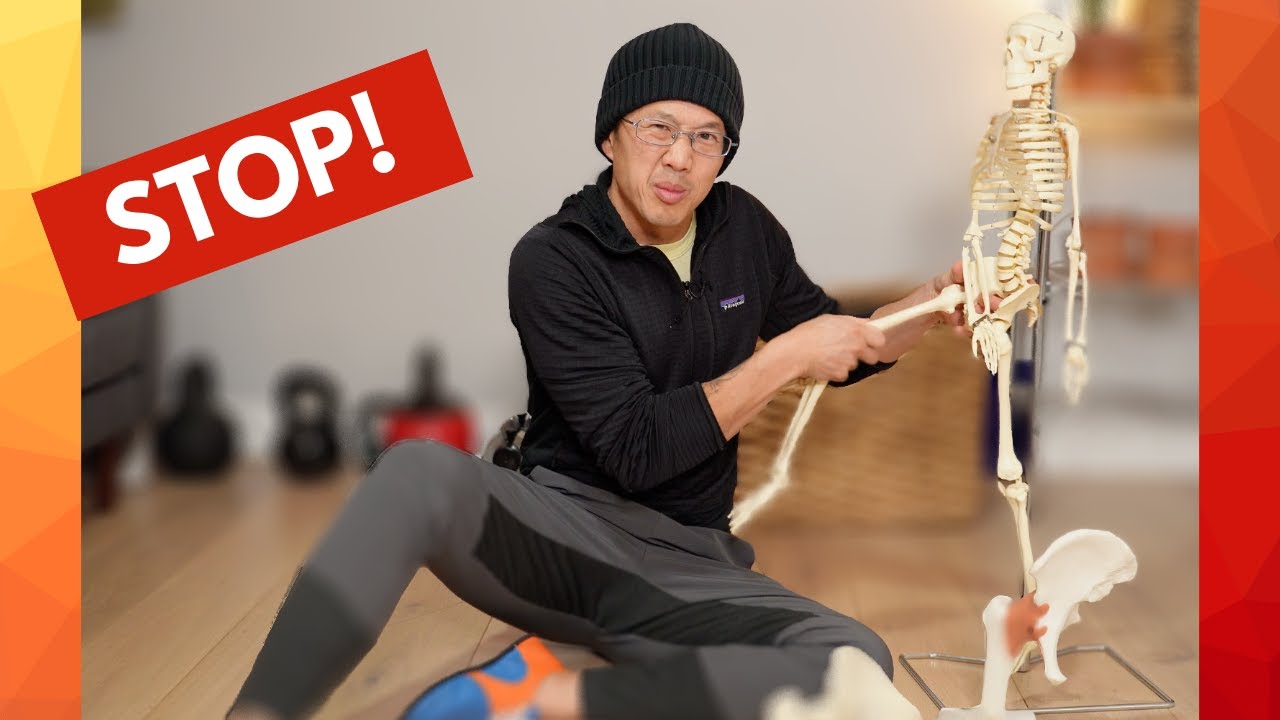This Will Wreck Your Hips - Real Talk On Hip Distraction
Unleash Your Creative Genius with MuseMind: Your AI-Powered Content Creation Copilot. Try now! 🚀
Introduction
In today's discussion, we are diving into the controversial topic of hip distraction. We will explore what it is, what it claims to do, and whether it can actually cause harm. I will also share my personal experience with hip distraction, shedding light on why you might not want someone to perform it on you. So buckle up and get ready for some hipster wisdom!
Understanding Hip Distraction
Let's start with the basics. Your hip joint is where your femur (thigh bone) meets your pelvis. It's a crucial connection point that allows for mobility and stability. Hip distraction involves grasping the femur and attempting to traction the femoral head out of the acetabulum (the socket). The theory behind this practice is that if the femur is held too firmly into the socket, it can cause tightness and discomfort. By pulling the femoral head out, the belief is you'll experience immediate relief. Sounds promising, right? Well, hold on to your hip flexors, because we've got more to unpack.
The Truth Behind Hip Distraction
Here's the scoop: nobody has really tested the efficacy of hip distraction. Physical therapists, doctors, massage therapists, and personal trainers frequently attempt to perform this technique, assuming they're helping alleviate tightness. But the truth is, they might be doing more harm than good. One of my own experiences involved a massage therapist who thought he could "fix" my hip tightness by forcefully tractioning my femur out of the socket. Let me tell you, it took me weeks to feel normal again. My hip felt loose, poppy, snappy, and unstable.
But I'm not alone in this debacle. A woman named Whitney, who has cerebral palsy, shared her similar ordeal. A well-meaning physical therapist attempted hip joint distraction on her, leaving her with a ton of fear and worries about permanent damage.
The Fallacy of "Feeling Tight"
Now, let's dive into the murky waters of how we perceive tightness in our muscles and the inherent dangers of this concept. Many medical and fitness professionals believe that if a muscle feels tight, you need to stretch it. But this advice is far from universal. Just imagine meeting someone who can tuck their leg behind their head but claims they feel tight in their hips. Clearly, the word "tight" doesn't accurately describe the sensations we experience. And if that's the case, we need to be cautious about how we approach stretching and massage for tightness.
The Myth of Expertise
You might assume that doctors, physical therapists, and fitness trainers possess specialized knowledge that equips them to tackle muscle tightness effectively. But let me burst that bubble for you. After years of studying massage and bodywork, I discovered that even the most experienced experts often have no idea if their methods will work. They lack certainty, and some even admit that their formal education doesn't equip them with the practical understanding of how to alleviate muscle problems.
I once encountered a physical therapist who flew from another state to learn basic exercises from me because his back and hamstring muscles were so weak that he couldn't even handle a 10-pound weight. It's mind-blowing that someone certified to help others with their muscles couldn't help themselves. This highlights the imperfections in the body of knowledge that professionals rely on.
Dissecting the Hip Distraction Myth
To illustrate how misguided some professionals can be, let's explore the idea that martial arts kicks distract the femur from the acetabulum. This claim demonstrates a lack of understanding of the physics involved in a kick: vectors, muscle force, and the sheer strength of the glute and thigh muscles responsible for hip stability. And to make such a statement without evidence is as silly as trying to teach a fish to ride a bicycle.
Now, back to hip distraction itself. Does it actually work? Well, my personal experience and Whitney's ordeal suggest that it can produce temporary relief, but at what cost? The sensation of stiffness and tightness in the hip often arises from imbalanced muscles and weakness. It's crucial to identify these muscles and train them to be stronger and more flexible.
This approach might involve exercises that target the adductor muscles, which run along the inner thigh and down to the knee. Additionally, addressing the hip rotators and performing exercises like frog stretches, side-lying leg lifts, and squats can help restore balance and control. Stretching and strengthening the posterior and lateral sides of the hip joint can also alleviate tightness and promote stability.
The Long-Term Solution
Ultimately, relying on someone to forcefully distract your femur from the acetabulum is a shortcut mentality. Instead, focus on restoring muscle function and reestablishing control and connection with the muscles around the hip joint. While I am not a doctor, this perspective encourages you to prioritize muscle training and stability over invasive interventions.
Conclusion
Pain is a real buzzkill in life, but it doesn't have to define our experiences. So, the next time someone suggests hip distraction as a magical cure, proceed with caution. Remember that the human body is resilient and can recover from all kinds of injuries. While hip distraction might cause temporary discomfort, it doesn't necessarily lead to permanent damage. However, it's important to restore proper muscle function and seek guidance from professionals who align with your beliefs and needs.
Stay hip, stay flexible, and embrace the majestic movement your body is capable of!
